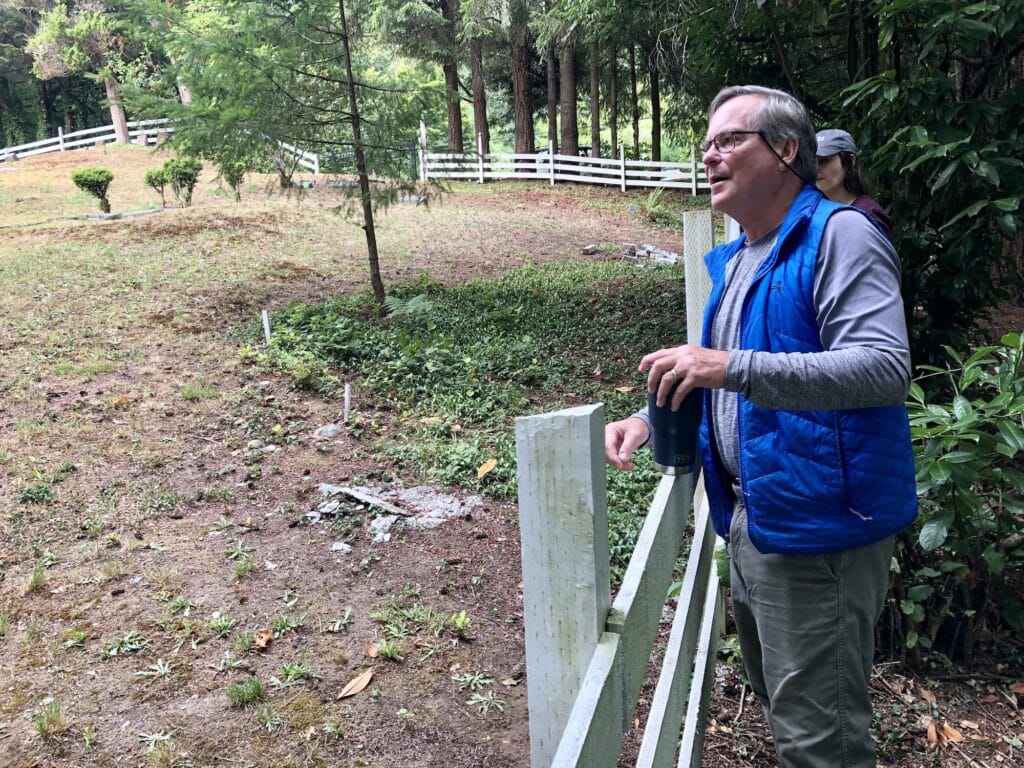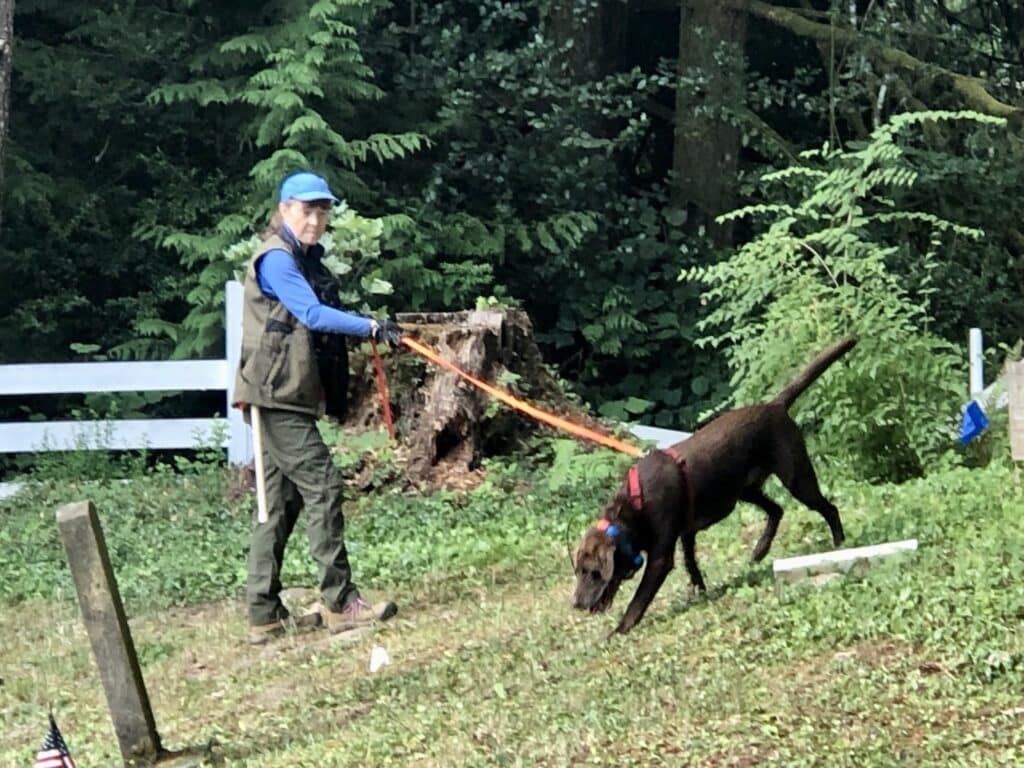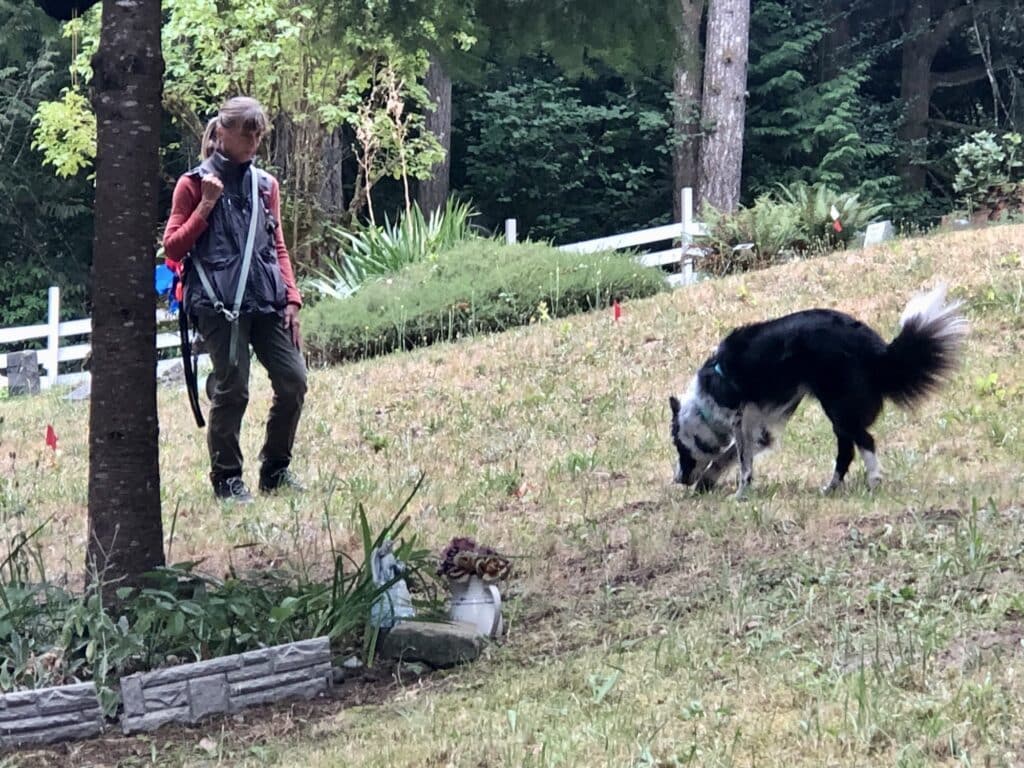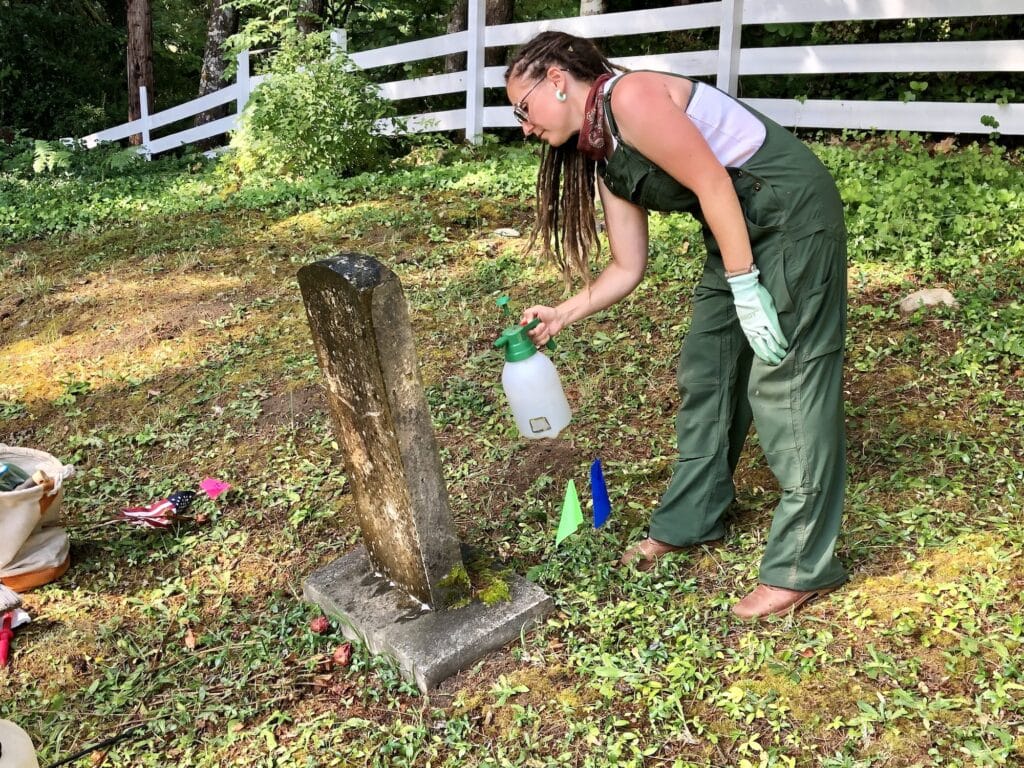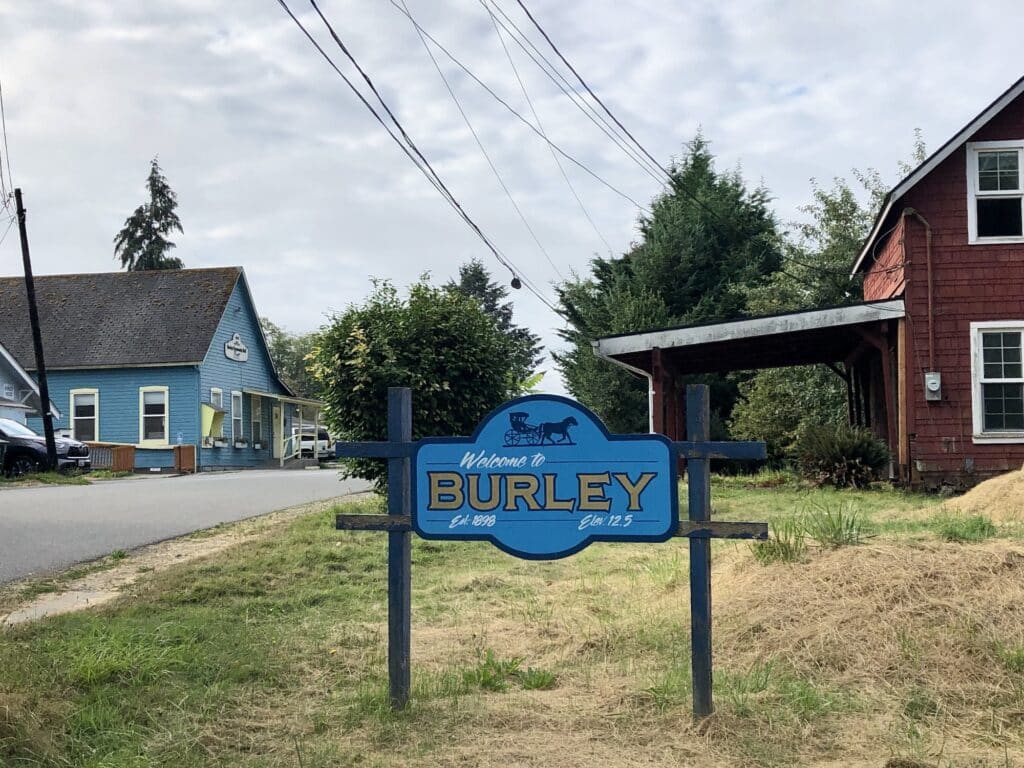Community
Dogs, technologies search for Burley gravesites
Three dogs and layers of technology are collaborating to discover where dozens of bodies lie in Burley Cemetery.
Community Sponsor
Community stories are made possible in part by Peninsula Light Co, a proud sponsor of Gig Harbor Now.
Thirty-eight graves are unidentified. Project manager Bruce Morse knows of several theories purporting to explain why.
One holds that a map of burial sites burned in a house fire. Another claims that Boy Scouts moved headstones for cleaning and forgot to replace them. A third posits that someone stole the monuments to support a failing foundation.
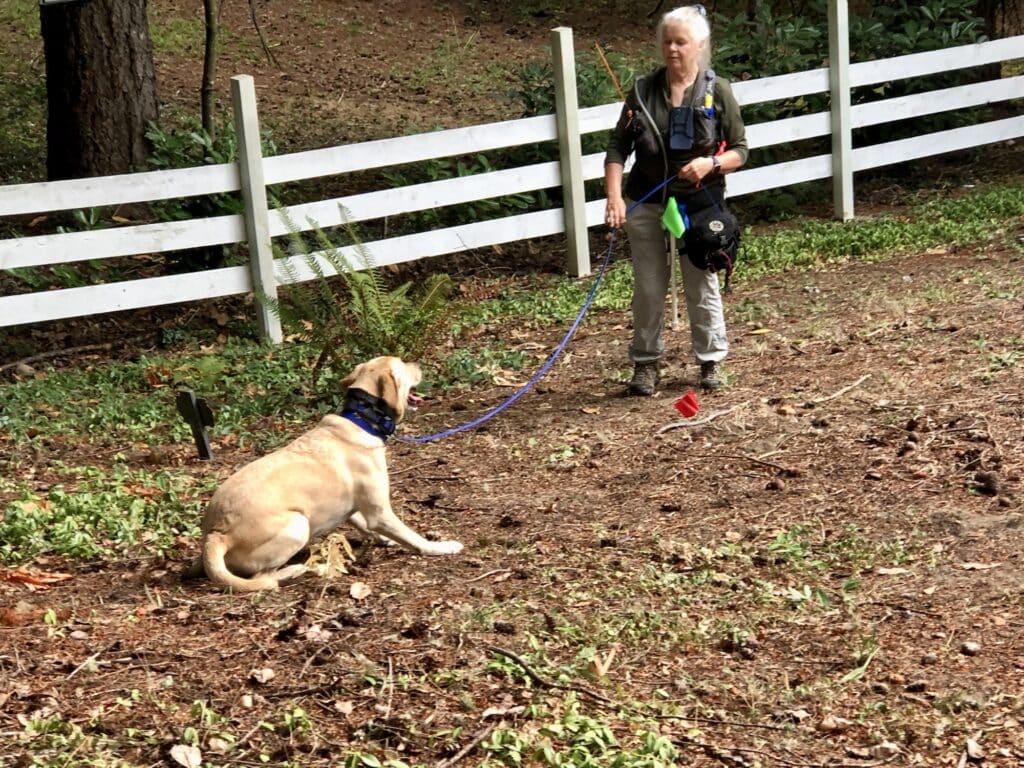
Killi lies down to tell handler Suzanne Elshult he thinks there are bones under here. Photo by Ed Friedrich
Regardless of how their whereabouts became unknown, the bodies can’t be far. The graveyard, established in 1898 by the Burley Co-operative Brotherhood, comprises just 0.4 acres, about a stone’s throw in any direction. A wrought-iron gate off rustic Willow Road, a half mile from the community center, announces in gilded lettering, “Burley Cemetery.”
Cemetery owned by Burley Library Association
Through the entrance, the terrain slopes downhill to a white, three-board fence that surrounds the grounds. Neighbor and unofficial caretaker Eric Knight, president of the nonprofit Burley Library Association, built the fence. The Library Association owns and manages the cemetery, a small park, community hall and post office building in the small town at the head of Burley Lagoon.
As the first step in the cemetery restoration and mapping project, Morse hired Ramirez Landscaping to remove branches, mow the weeds and generally clean up the grounds. The work more clearly exposed the headstones and markers of 81 identified graves. Among them is Richard Malcolm Tilton, the next-to-last person interred there, in 1991.
Morse applied for a grant to improve the cemetery, but didn’t get it. Coincidently, the library association heard from Tilton’s brother, Dave, who expressed interest in having his remains placed there. He was a Burley native and his father and grandfather (who was a member of the utopian brotherhood group that once settled Burley) lived there.
Generous donation funding project
Dave Tilton asked “how much do you need?” Morse said. He wrote a “very generous” check that, along with volunteers, fuels the project.
Tilton never let on that he was sick. He died in the spring and will be laid to rest in the family plot.
“I believe he had cancer and wanted to make this happen,” said Morse. “I promised him and his family we would continue on.”
Morse, 67, retired to the Burley Lagoon shore four years ago after a career in computer mapping, geographic information systems, and system and data integration. He became interested in the cemetery after volunteering as a researcher and archivist at Harbor History Museum and resurrecting a Burley history group.
Following the grounds clean-up came digital mapping of gravesites. Evergreen State College student Dave Henry, as part of his computer mapping studies, collected liDAR, GPS and drone data to create a detailed, three-dimensional map of the cemetery’s topography.
LiDAR uses laser beams to measure distances of objects on the earth’s surface. GPS employs satellites to determine location. The map enabled Henry to identify sunken areas that might be graves.
Info made available online
Henry also created a public online database that includes the information about each gravesite, such as name, date born and died; the precise location, type and condition of the marker; and a photo of it.
“That was really important to me, not only to improve the physical nature of the cemetery but to have a database that would be accessible to anyone in the community,” said Morse, who seeks to tie into the resources of Harbor History Museum and genealogy sites such as ancestry.com. “Now we have permanent records that can’t be burned up in a house fire, which is what we believe happened.”
White stakes also provide hints of hidden graves. Morse said a former caretaker placed them a few years ago where he thought they were. So do stones.
“Somebody told me if they didn’t have money they could bury the person and just put a rock there and come back later when they can put in a proper headstone,” Morse said.
Dogs trained to smell bones
On Thursday morning, the Sequim-based nonprofit Canine Forensics Foundation arrived. Three dogs with their handler/trainer/owners walked grids across the cemetery to detect unmarked gravesites. The dogs can sniff out human remains buried for up to thousands of years and to 10 feet deep.
Teams included Sally Olson and chocolate Lab Torr of Bainbridge Island; Suzanne Elshult and yellow Lab Killi of Edmonds; and Cindy Arnold and border collie Riley of Sequim.
When a dog alerted on a possible grave, it sat, laid down or barked, or some combination. The owner marked the spot with a small red, blue or green flag, color-coded to the dog, and rewarded it with a treat or ball.
“It’s a part of history,” Canine Forensics Foundation president and founder Lynne Angeloro said of the searches. “That’s a cool part of it. I searched with my dog to bring closure to people.”
GPR sends signals into ground
The canine search narrowed the cemetery down to areas of interest for the ensuing ground-penetrating radar to explore. A team from Aqua Terra Cultural Resource Consultants of Olympia conducted a GPR survey on Friday. They ran a lawnmower-sized cart across suspected areas that sent signals into the ground and recorded the data on a computer.
“We call it data signatures,” said Senior Archeologist Sarah Amell. “It could be shadows. My GPR specialist processes the data in-house and makes a determination of where grave shafts are.”
The combination of GPR and canine searches can provide the most accurate survey results, according to Angeloro. Along with oral history and other archival information, they provide multiple layers of corroboration to ensure a more successful survey.
“I see it as layers of data that stand on top of each other,” Morse said of the 3-D topography, canine search, GPR and the information recorded about each gravesite. “It’s a nice blend of archaeologists and technologists and researchers and organizations.”
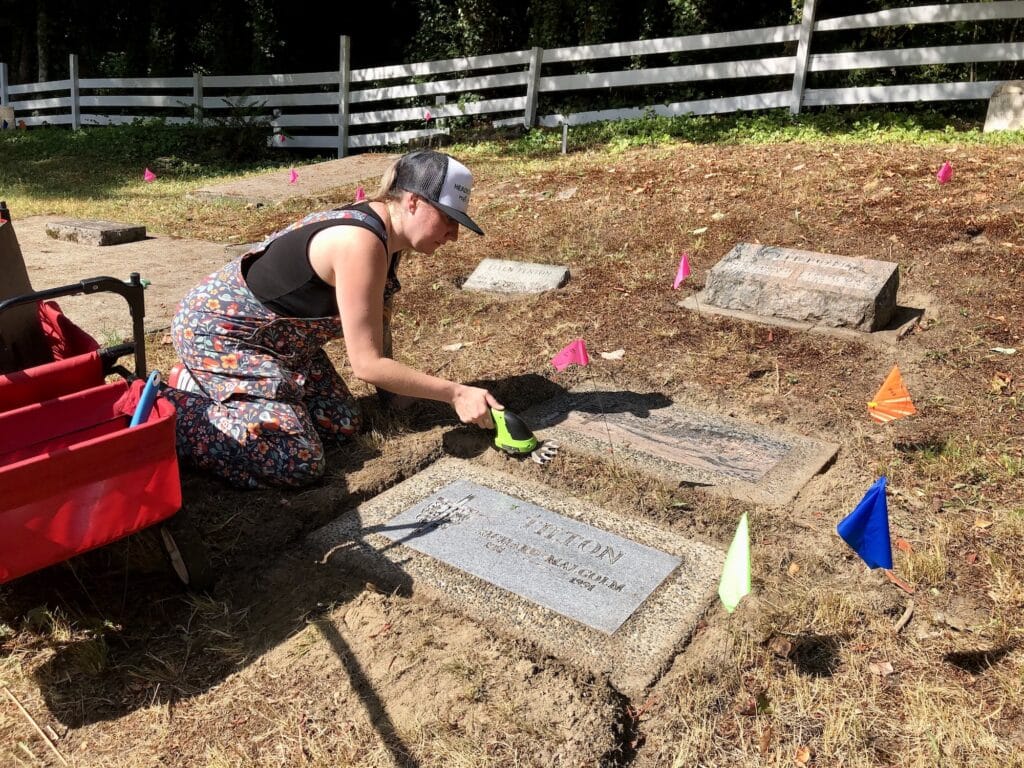
Caleh Chumley trims around a marker Monday. The flags mark where dogs indicated a body may lie. Photo by Ed Friedrich
Henry returned over the weekend to capture drone photos of the dog search flags to provide still another layer of information.
Grave tenders add finishing touches
Encroaching plants and soil partially cover several gravestones. Decades of mold, moss and fungus growth make some difficult to read. Sisters Tara Haag and Caleh Chumley of Port Orchard-based Headstoners, LLC, are cleaning them over the next couple weeks.
They’re removing weeds and dirt covering the stones, edging around them and scrubbing the buildup from the marble with a biological solution, brush and water. Cemeteries normally care for the grounds, but monuments are the families’ responsibilities, Haag said. Typically, loved ones hire the duo to tend one grave or plot. This is the first time they’ve renewed an entire cemetery.
Haag describes herself as a taphophile, a person interested in cemeteries and gravestones.
“I’ve always been attracted to the historical meaning,” she said. “I think about the names and the lives and what it was like for them. I’ve always enjoyed history, so (the business) seemed like a connection to that.”
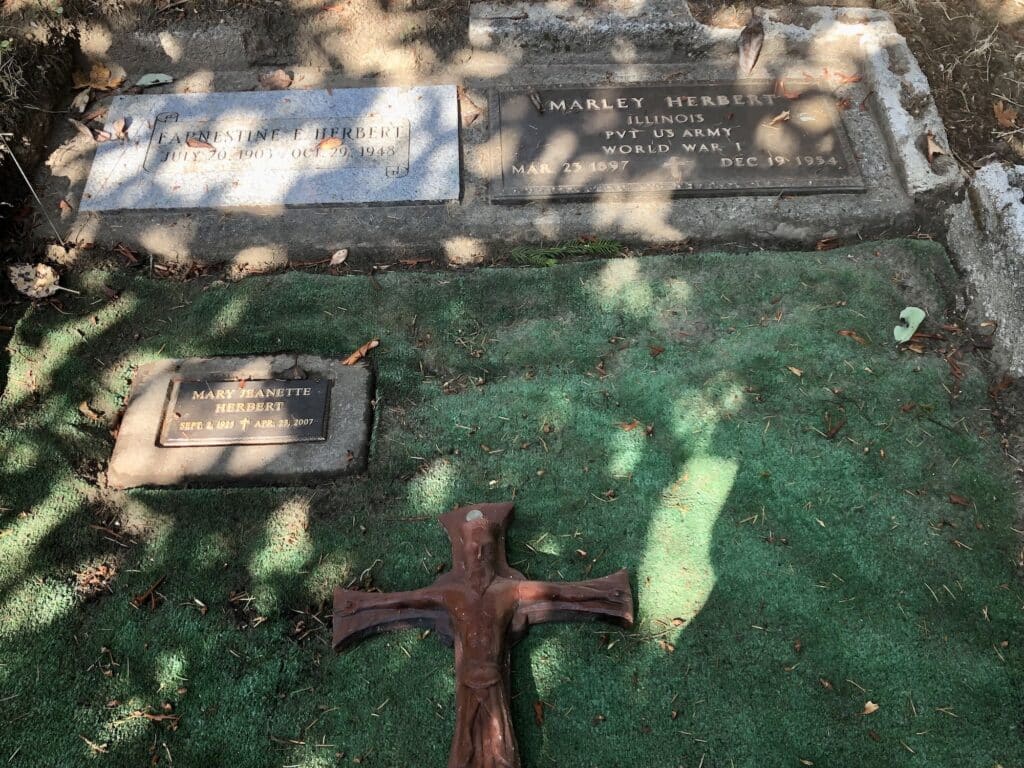
The grave tenders scraped away the debris Saturday to discover Mary Herbert’s marker. Photo by Ed Friedrich
What fascinates Haag about Burley Cemetery is that every gravestone or plot seems personal. They’re all unique.
“We try to bring the stones back to life for other generations,” she said of her service. “We like to conserve it so others can walk through and find their people.”
Surprise discovery
While cleaning over the weekend, the pair scraped duff from a Herbert family plot to discover a green, synthetic-turf surface. A cutout in the middle revealed the stone of Mary Jeanette Herbert, the most recent addition, in 2007. She isn’t among the list of people buried in the cemetery.
Herbert is related to Frank Herbert, who wrote the science fiction series “Dune.” The author, who died of cancer is 1986, is not buried there.
William Packer, the Civil War veteran profiled a few weeks ago in Gig Harbor Now and Then, is buried there, yet he has no marker and his name isn’t on any existing list. His funeral notice and death certificate both say he’s in Burley. His wife has a prominent marker, so it’s reasonable to assume he’s next to her. They had no children. Perhaps no one was left to buy him a marker.
Morse wouldn’t be surprised if the GPR finds more markers after a few weeks of data processing. Lindsey Holdener, Aqua Terra project archaeologist, did much of the coordination and will process the data.
He plans to place a memorial bench and sign at the cemetery later this summer. The goal is to restore the cemetery, preserve it and provide access both physically and digitally.
“Make it a welcome place for people to come and visit, but also provide data access,” Morse said.
Discovering the gravesites may prove somewhat anticlimactic. Nobody knows who occupies them.
“We are exploring somehow marking the unknown graves that we find,” Morse said. “Determining who is buried in an unknown gravesite requires doing DNA analysis and digging into a gravesite. This is very expensive and requires special permits/permission, so we are not planning to do that. That is the rest of the story. To be continued.”
Burley’s utopian roots
The cemetery was founded in 1898, the same year as the Burley Co-operative Brotherhood. It was one of a handful of utopian communities that emerged around the Puget Sound during that era, including the Home colony on Key Peninsula.
Several Chicago leaders of the group Social Democracy of America settled at the end of Burley Lagoon. By 1900, the colony’s population ranged between 150 and 200. It boasted a lumber mill, orchard, fruit cannery printing press and cigar factory, according to Charles Pierce LeWarne’s “Utopias on Puget Sound 1885 to 1915.”
They printed their own currency, paid everyone an identical salary and championed gender equality. The cooperative’s economic model failed to sustain its citizens, however, and it disbanded in 1912. The Burley Library Association became legal owner of its public properties.


